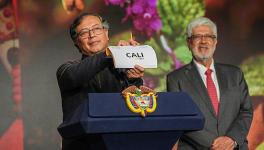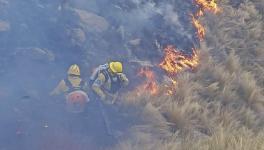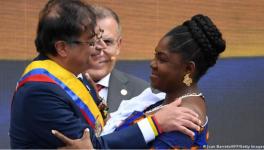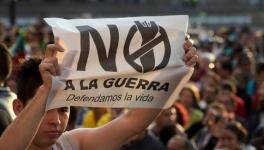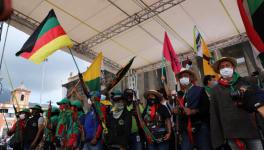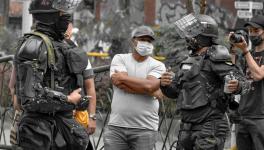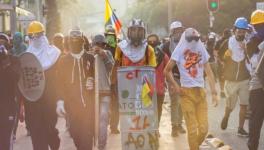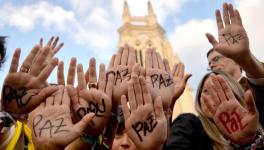Murder in Colombia
What the eye does not see, the heart does not grieve over.
Juan Gabriel Vásquez, El ruido de las cosas al caer(2011).
The name Ana María Cortés means little outside Colombia. Age 46, Ana María Cortés was murdered in a cafeteria at 7pm on July 4 in the village of Cáceres (Antioquia), about six hundred kilometres north of the country’s capital city of Bogotá. Why was Ana María Cortés killed?
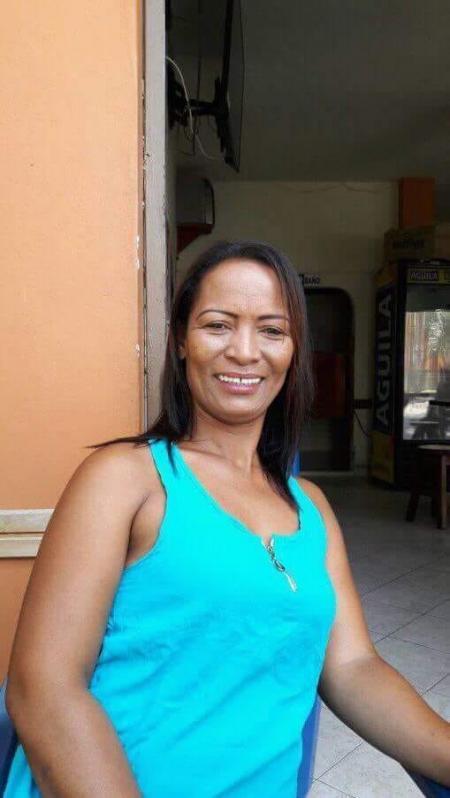
Colombia’s Defence Minister Luis Carlos Villegas said rather callously that Ana María Cortés was a member of the Gulf Clan and that her death was the result of ‘líos de faldas’ (sentimental deaths). The Attorney General of Colombia Néstor Humberto Martínez further said that it was ‘irrefutable’ that the murder was sanctioned by Jonás, a leader of Los Caparrapos – a break-away rival gang from the Gulf Clan. The Attorney General said that it was likely that Ana María Cortés was an informer against Los Caparrapos on behalf of the Gulf Clan. If it can be shown that Ana María Cortés was killed as part of a gang war – a sentimental death – then there is nothing more to be said. All eyes can turn away. Deaths in the drug wars have become a fact of nature, not of social concern.
But this is – as people active in politics in Colombia say – a lie. Between January 1, 2016 and June 30 of this year, 311 Colombian human rights advocates and local level leaders have been assassinated. In the week before the murder of Ana María Cortés, seven people who fit her profile had been killed in her region. On the Monday before her assassination, while Colombia played England in the World Cup, two community leaders were murdered – Luis Barrios of Palmar de Varela (Atlántico) and Felicinda Santamaría of Quibdó (Chocó). It is no surprise that all three of these leaders were Afro-Colombian, and that all three were active in building the confidence of their communities.
Indepaz (Instituto de estudios para desarrollo y la paz) – a Bogotá-based think tank – has looked closely at these assassinations. It suggests that only 13% of these murders are because of the cultivation of coca – and so, as part of the drug wars. Over 80%, on the other hand, are because of economic disputes over land and natural resources as well as local power. The death of Ana María Cortés appears – it seems – amongst the 80%.
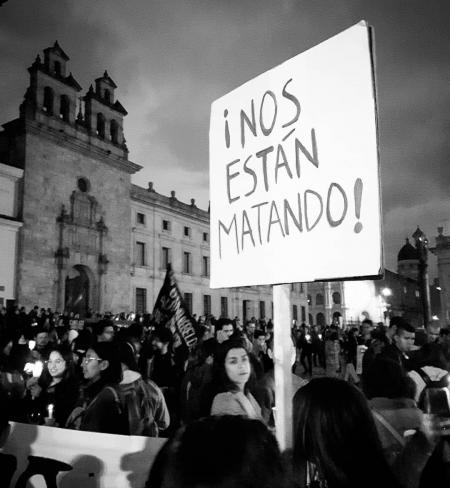
The political nature of this violence is clear to the people of their communities. Last Friday, a range of organisations marched around Colombia under the blunt slogan, Nos están matando– They are killing us.
Political Murders.
Who was Ana María Cortés? She was a local community activist who coordinated the presidential campaign for Gustavo Petro in her city of Cáceres. Petro, a former left-wing guerrilla leader, was the presidential candidate of the Left in this year’s presidential election. He lost to the candidate of the Right – Iván Duque – in the second round. Petro’s was one of the best showings of the Left in a very lopsided presidential contest. He brought together the various currents of the Left, including the militants of the FARC (Revolutionary Armed Forces of Colombia) who have committed themselves to the peace process.
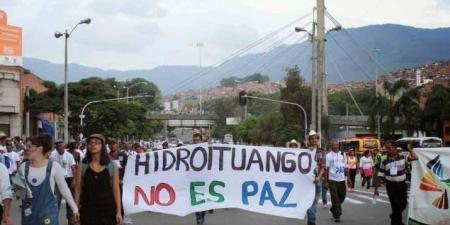
Ana María Cortés did not enter the campaign of Petros as a novice. She was a long-standing campaigner for her community. Her village of Cáceres is in the shadow of the Hidroituango hydroelectric dam, whose owners EPM acknowledge is a danger to the area. In April, EPM asked the government to issue a warning to residents that the dam might fai and flood the villages – including Cáceres – that lay below Hidroituango. Twenty-five thousand people have been displaced from the area. Ana María Cortés fought to ensure that the concerns of her neighbours were taken seriously. Friends say that she got involved in the Petros’ campaign as a way to amplify her political agenda. In the province as a whole, Duque won with more than half of the votes, but in Cáceres – as a result of the efforts of Ana María Cortés – only one a few hundred votes separated Petro from Duque.
In 2016, the fighters of FARC began to demobilise. The vast tracts of Colombia that had been under FARC control now faced a political vacuum. Right-wing paramilitary groups and drug gangs – both close to the right-wing political parties – fought their way into these areas. They have been systematically killing all the local political leaders to ensure that there is no challenge to them. Names of local leaders are on pamphlets that threaten them with death if they continue with their political activity. Many local leaders, out of legitimate fear, surrender into silence. Others are killed. This pattern is indisputable.
Ana María Cortés family suggest that there is more to this than that (their views are affirmed by Jorge Rojas, who led the presidential campaign of Petro). The threat to her, they say, came from a telephone number of the local police commander. The Colombian state, they feel, is an active participant in this murderous operation. Since the election of Duque, who has been against the peace process between the Colombian state and the FARC, the right-wing squads have increased their assassinations. Silence from the new president threatens the fragile future of Colombia.
Return to War?
In the 1980s, FARC entered a peace process and sent its militants into over-ground political activity. Many joined the Patriotic Union, formed in 1985 by the FARC and the Colombian Communist Party, and campaigned in the next year’s general elections. Soon thereafter, however, the exterminations began. In 1986, Jamie Pardo ran as the party’s presidential elections. He was assassinated the next year. Once more, drug gangs were involved. It was said that José Gonzalo Rodríquez – The Mexican, as he is known – ordered the hit. The Communist Party would later show links between the Colombian military and The Mexican. It was then as is it now: gangsters do the dirty work, while the state directs them from the next room. In a few years, a thousand members of the Patriotic Union were killed.
FARC returned to the forests. The door to peace had been closed.
Would FARC return to the forest now? In May, the FARC National Political Council released a statement that suggested that it would not, this time, walk away from peace. Peace, a militant told me, ‘cannot be reversed’. The mood in the country is for peace. Standing against it is the right-wing, whose tendency is to behead the movement of the people. It is sanctified in the international arena because it has been able to characterise the FARC as a ‘terrorist group’, while its own ruthless allies – the drug armies and the paramilitaries – are seen as patriotic.
Some FARC members are unhappy with this approach. These dissident factions – disidencias – have returned to the gun. In fact, just yesterday, three investigators from the government’s legal offices were killed near Colombia’s border with Ecuador. It is likely that the ambush was conducted by a disidencia group. But these will be small pockets of hardened fighters. The bulk of the Left, including of the FARC militants, believe that the answer to the state and its right-wing allies is not through the barrel of a gun, but ‘in the streets, the new battlefield’ – as one militant told me.
But the streets are eventually going to be empty. The right-wing groups have been assassinating people associated with Colombia Humana – good people such as Frank Dairo Rincón, Margarita Estupiñan and Ana María Cortés. If they will all be killed, the possibility for the Left to forge a front of the people against the hierarchies of drugs, land theft, mining and money will be impossible.
Days before she was assassinated, Ana María Cortés told a friend, ‘you don’t know if the paramilitaries will kill you or if you will die in the avalanche of Hidroituango’. In the end, it was the paramilitaries that got her.
Ana María Cortés leaves behind two children and her mother. Their grief is incalculable.
Get the latest reports & analysis with people's perspective on Protests, movements & deep analytical videos, discussions of the current affairs in your Telegram app. Subscribe to NewsClick's Telegram channel & get Real-Time updates on stories, as they get published on our website.









